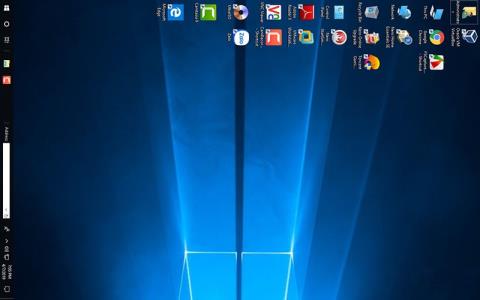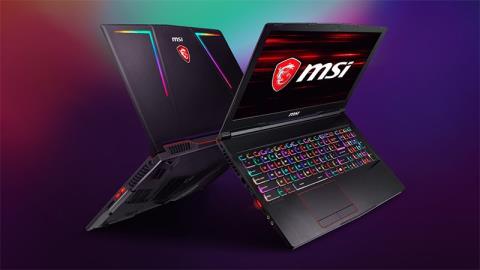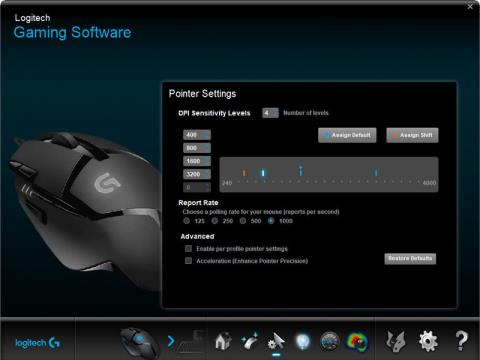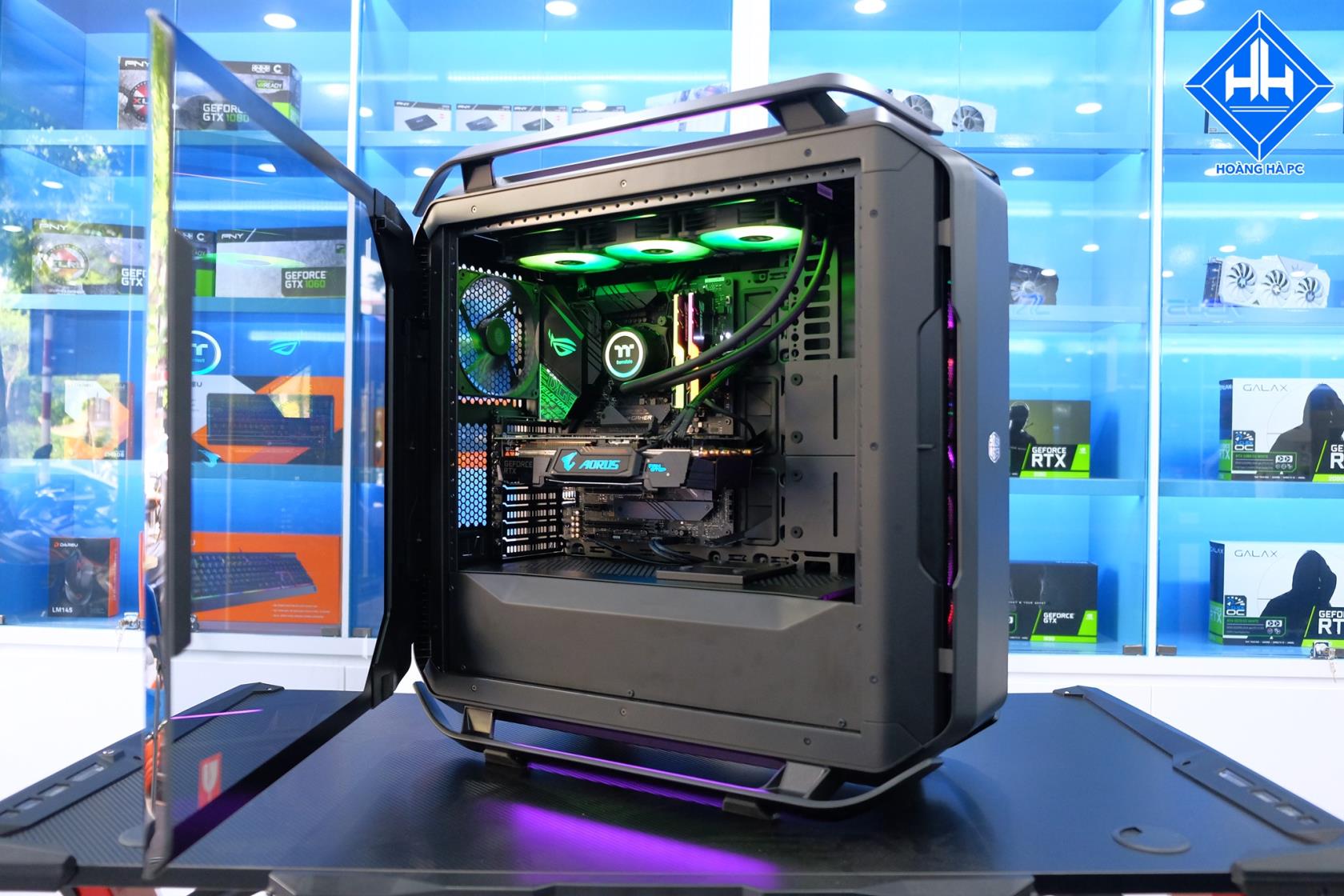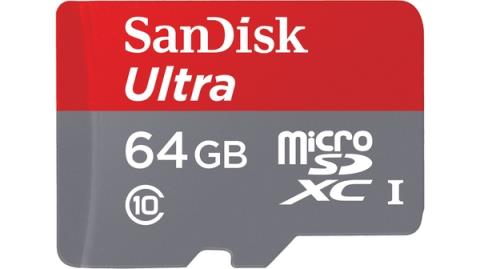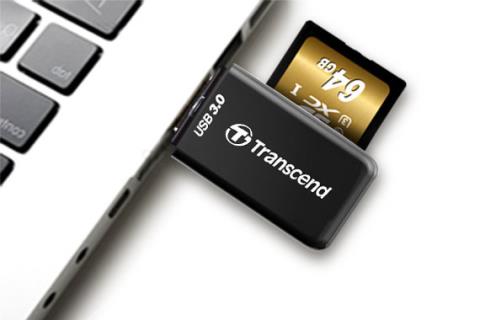Which Dell Laptop Line is Best, Should Buy and Use Today?

You are wondering which Dell laptop is the best, should buy today. So, let's take a look at the detailed answer right in the content below.
Our team enjoys using 1 Gbps internet connections. For most people in the world, that is fast. However, 10 Gigabit internet connections and devices are starting to show up. Yes, they are mostly for business users, but internet service providers are going to create 10G plans for consumers too. If you were to have such an internet connection, you could download any game from Steam in 5 to 10 seconds. Imagine that! However, if you want to enjoy such network and internet connections, you need this little bugger: the ASUS XG-C100C network adapter. Read this review and see what it has to offer:
Contents
ASUS XG-C100C: Who is it good for?
This network card is a good option for:
Pros and cons
ASUS XG-C100C has many good things going for it:
There are a few downsides too:
Product rating 5/5
Verdict
ASUS XG-C100C is a small beast. It works flawlessly, and it has good driver support, both for Windows and Linux. To make it even more appealing, it comes with a built-in QoS (Quality of Service) that prioritizes online gaming. Right now, this network adapter is an investment in the future. Its value is going to be fulfilled when Wi-Fi 6 wireless routers with 2.5 Gbps or 10 Gbps Ethernet connections become the norm. When writing this review, there are only a few such routers on the market, and all of them are expensive. However, this is going to change in the coming years. We are looking forward to upgrading our internet connection to 2.5 Gbps or 10 Gbps. Only then ASUS XG-C100C can show its value.
Unboxing the ASUS XG-C100C network card
The ASUS XG-C100C 10G network adapter comes in a small box blue/white box. On the top cover, you see a picture of the network card, as well as a list of its essential characteristics.
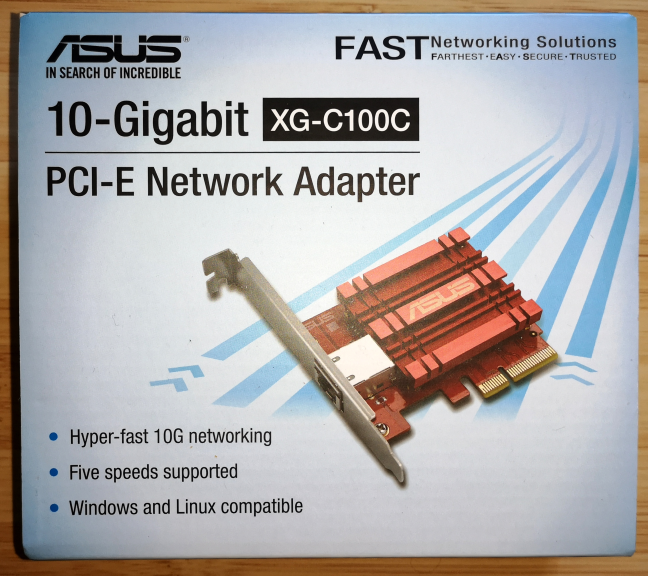
The package of the ASUS XG-C100C network adapter
On the back side of the box, you see detailed information about its compatibility with networking standards, so that you understand whether it is a good fit for your needs.
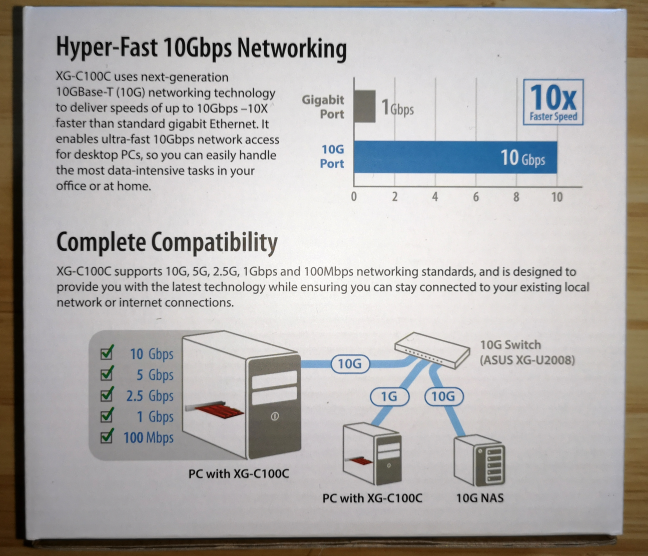
The packaging for the ASUS XG-C100C network adapter
Inside the box, you find the following elements: the ASUS XG-C100C PCI-Express network card, a disc with drivers and user manuals, information about the warranty, a printed quick start guide, and a spare metal chassis for using the network card in small-format PCs.
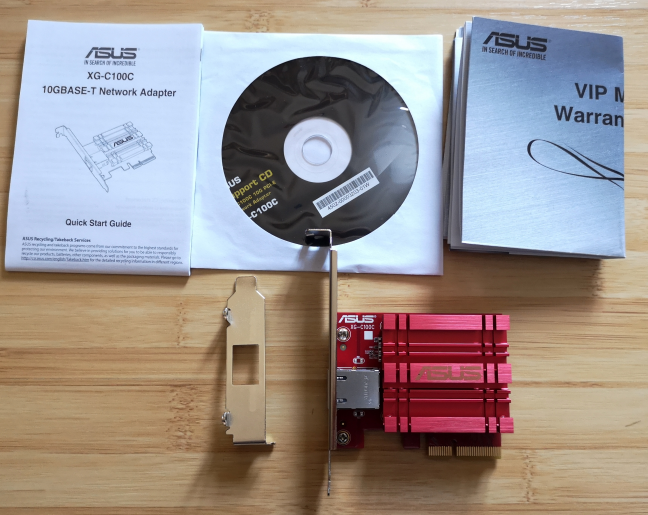
ASUS XG-C100C: What is inside the box
The packaging used for the ASUS XG-C100C network card and simple, and easy to unbox. Inside you find everything you need to get started, including a disc with drivers for Windows and Linux.
Hardware specifications
ASUS XG-C100C is a PCI-Express network card that uses an Aquantia AQtion AQC107 high-performance controller, that is capable of handling 10 Gbps Ethernet connections.
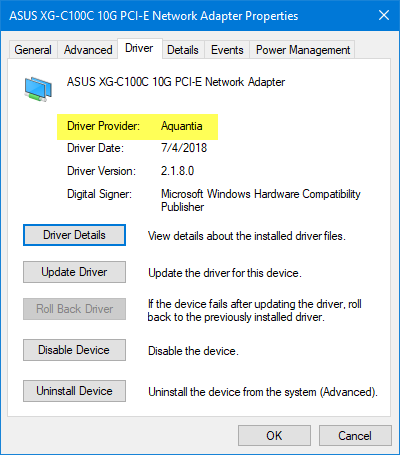
ASUS XG-C100C uses an Aquantia controller
The best part about is that it can work with multiple types of Ethernet connections: 100 Mbps, 1 Gigabit, 2.5 Gigabits (like those on the ASUS ROG Rapture GT-AX11000 wireless router), 5 Gigabits, and 10 Gigabits.
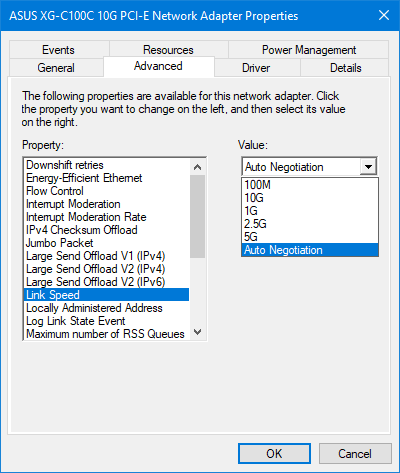
The speeds at which ASUS XG-C100C is capable of working
You can install ASUS XG-C100C on any computer, as long as it has a PCI-Express port available. It has a small size of 12 x 8.46 x 2.05 inches or 30 x 21 x 5 centimeters in length, width and height, without the bezel. The card also has a spare metal chassis for using the network card in small form factor PCs, which is an excellent precaution on ASUS's part.
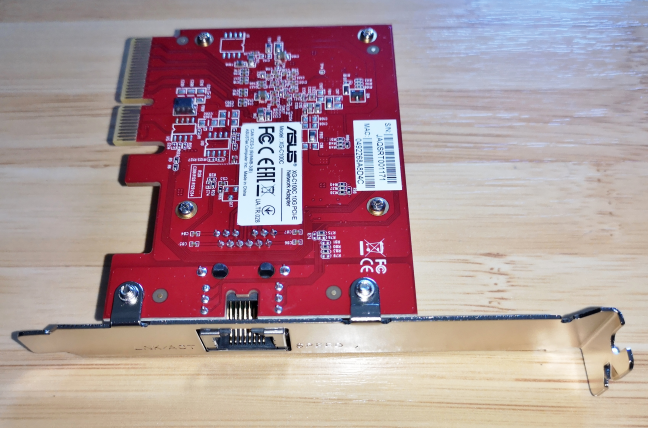
The ASUS XG-C100C PCI-Express network card
ASUS XG-C100C can work with both Cat5e and Cat6 network cables. We used it with a Cat6 cable, connected to a desktop computer.
If you want to read the official specification of this product, go to this page: ASUS XG-C100C Specifications.
Using the ASUS XG-C100C network adapter
Wireless routers that offer 10 Gigabit ports are slowly entering the market, and they are going to become the norm in the coming years, at least on the premium market. Also, 10 Gigabit internet connections are slowly creeping up all over the world. While it may take a few more years until they become commonplace, there are a few countries where you can get such subscriptions, including in the United States, Sweden, or Estonia. While not many people need a network card like ASUS XG-C100C, their number is going to slowly increase in future years.
Now, let's get back to using this powerful network card: installing the ASUS XG-C100C network card is easy. The installation is done like with any other PCI-Express card. As you can see, the network card has a red heatsink with the ASUS logo on it, which cools the Aquantia AQC107 controller that does the heavy lifting.
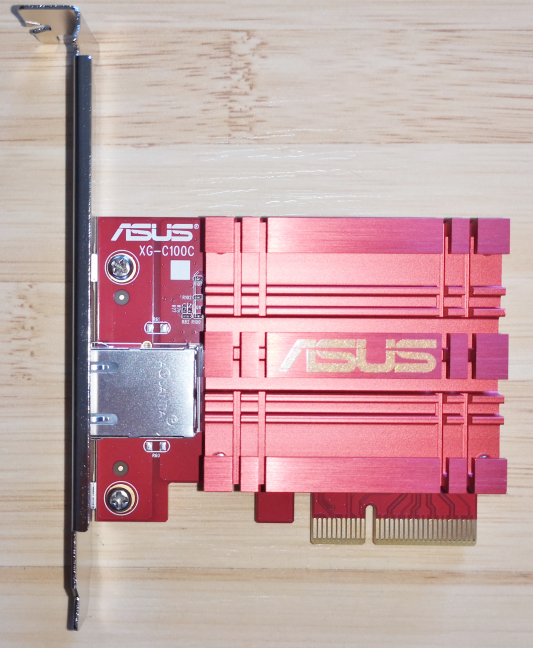
The ASUS XG-C100C PCI-Express network card
To use the ASUS XG-C100C network adapter, you need to install its drivers. Luckily, ASUS has provided a disc in the box, that you can use. However, those are the initial version launched by ASUS when the network card was first manufactured. In the meantime, you can find newer drivers that improve performance, on their support page. ASUS provides updated drivers from Windows 7, Windows 8, and Windows 10, as well as Linux, making this card useful also in enterprise environments.
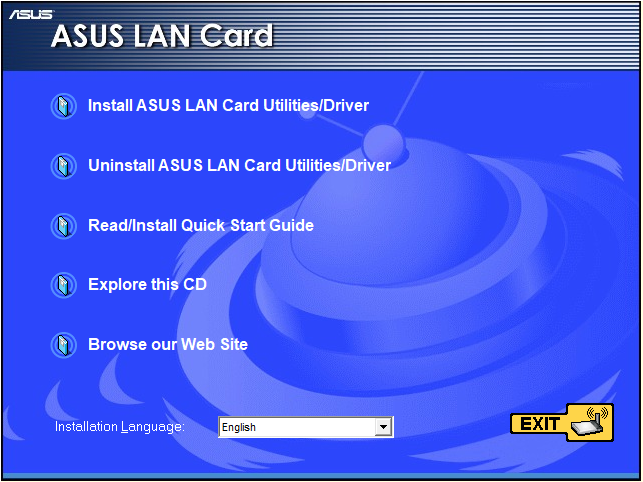
The setup disc for ASUS XG-C100C
We used the ASUS XG-C100C in conjunction with the ASUS ROG Rapture GT-AX11000 wireless router that has a 2.5 Gbps Ethernet port. The network card worked straight away at that speed, without any configuration on our part.
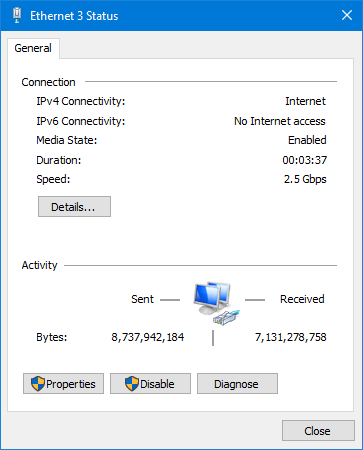
ASUS XG-C100C working on a 2.5 Gbps Ethernet connection
Unfortunately, we could not test the speed potential of this network card for the following reasons: the router we used had only one 2.5 Gbps port, and our desktop PC was the only one in the network working at this speed. Also, our internet connection is capped at 1 Gbps for the download speed. As you can imagine, ASUS XG-C100C had absolutely no problems to provide us with downloads at 1 Gbps. However, we did a bit of searching online, and we found some discussions, where a few lucky users, were able to test this network card on 10 Gbps connections, and the card delivered as promised. It would have been awesome to receive in testing from ASUS two network cards so that we could create a direct connection between two desktop computers, and see for ourselves that ASUS XG-C100C can achieve its promise of 10 Gbps. We could have transferred the contents of a Blu-Ray disc with Spider-Man: Into the Spider-Verse, in approximately five seconds. 🙂

With ASUS XG-C100C it would take seconds to transfer "Spider-Man: Into the Spider-Verse" through the network
One neat feature is that ASUS XG-C100C also has built-in Quality-of-Service (QoS) technology that automatically prioritizes bandwidth for gaming packets so that you can enjoy a smooth, latency-free gaming experience. This makes it a good pick for gamers who desire the best possible speed for their online gaming experience. Most probably they are the first niche of consumers that would love using such a network card.
What is your opinion about the ASUS XG-C100C network card?
We loved using the ASUS XG-C100C network card, even though we could not reach its maximum potential. When we have the means to do that, we promise to get back to you, and update this review, and recommend this powerful network card to a broader audience, that can benefit from using it. Until then, do not hesitate to leave a comment and tell us what you think about the ASUS XG-C100C. Also, when do you think that 10 Gigabit internet connections are going to become widespread, even for home users?
You are wondering which Dell laptop is the best, should buy today. So, let's take a look at the detailed answer right in the content below.
Your computer screen can be completely rotated horizontally, vertically if you know how. The information below will help you adjust quickly.
Intel UHD Graphics 620 is a hot onboard graphics card recently. So what makes this product stand out from other cards on the market?
You are looking to refer to the current popular msi laptop line. So which country's msi laptop? Is the quality good or not? With WebTech360 for reference.
What is the difference between a gaming mouse and a regular mouse? Let's learn more about this issue with WebTech360 through the article below!
Simple and effective ways to convert DOCX to DOC you can try at home. Please refer to the article of WebTech360!
What is the integrated graphics card in the CPU? Integrated graphics cards possess many advantages that are highly appreciated by users. Why do so many people choose this card?
Copiers are increasingly improving in quality and price. Each copier will have a different configuration and price to meet consumer needs.
Instructions for Downloading .Net Framework and how to install it easily and quickly for the machine to be able to use after only a few minutes.
What is Bypass? Advantages and disadvantages and the most accurate and effective way to identify IDs. All of the above questions will be answered in the article below.
Memory cards are small in size but have massive storage capacity and are convenient to use. So what are the top 64GB memory cards that are most commonly used?
The memory card reader is not only a tool to help the memory card transfer data, but also to preserve and prevent card loss. So which is the best type of memory card head?
Installing printers for computers and laptops is a permanent requirement for office workers. Are there easy and fast ways to install on both devices?
Laptop freeze is a common phenomenon when using the computer for a long time. Join WebTech360 to discover how to fix a frozen laptop through the following article.
Do you ever wonder if it’s possible to buy TikTok likes after watching a video with thousands of them? Come explore the realm of social media and learn can you buy TikTok likes and how buying these likes can boost your presence on social media.
Fueled by mounting interest and intrigue, Delta-10 gummies have seen a surge in popularity as cannabis connoisseurs scour the market for new experiences.
Stair lift rentals are an option for individuals who require assistance with mobility due to age, injury or disability. Stair lifts can provide a solution that allows individuals to safely and independently access different levels of their homes without the need for costly renovations.
You must exert every effort as a property owner to protect your investment. That means keeping your property in good condition and ensuring it is always safe and habitable for tenants.
Renting out your home is a perfect way to supplement your salary. If you have an empty room, renting it out helps you make money while still owning it, which is a win-win scenario
Triple Protector is a Samsung TV's built-in protection technology to increase the durability of the TV against lightning, moisture, and electric shock.
